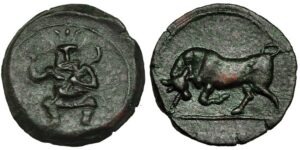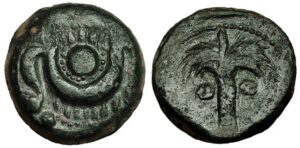The south of the Iberian Peninsula has been a recurring destination for different Mediterranean cultures throughout antiquity. Its proximity to North Africa and its wealth of gold resources, together with its good river and land communications, facilitated the Phoenician presence as early as the 9th century BC, founding cities and factories such as Gadir, Malaka, Ebusus and Sexi. As a consequence of the outcome of the First Punic War (264-241 BC), Carthage arrived in the south of the Iberian Peninsula attracted by its mineral resources, founding Qart Hadasht in 238 BC, not only as an expression of its capital status in southern Iberia, but also as an important commercial and military port, with Ebusus – with the presence of Punic settlers since the 6th century BC – being one of its territories and commercial nodes – one of its most significant territories and commercial nodes between Iberia and Carthago itself or other ports of interest. Thus, the interactions of the Punic world with local societies increased exponentially until reaching advanced stages where the Punic presence had a significant influence on local identity discourses, making military and commercial alliances with the oppida before and during the Second Punic War, until the conquest of Qart Hadasht in 209 BC by Rome. The new social and economic realities meant that during the 3rd century BC different urban centres began their coinage processes, such as Gadir, Ebusus, Malaka or Baria, with metrology or iconographic motifs of clear Punic influence. This influence is also evident in most of the mints that emerged during the 2nd century BC, such as Abdera.

This evolution in local identity tools would also be reflected in other social practices with a strong identity charge, such as funerary practices. Coins, which were a novel element for many communities in the south of the Iberian Peninsula, were used for purposes other than strictly economic ones and were included in funerary offerings, as can be documented in the Late Punic and Roman necropolises of Gades, Malaka and Ebusus. This line of research aims to address the social, chronological and evolutionary scope of this funerary practice in the south of the Iberian Peninsula and the island of Ebusus, where the Punic coin has a singular role as part of the funerary trousseau.


